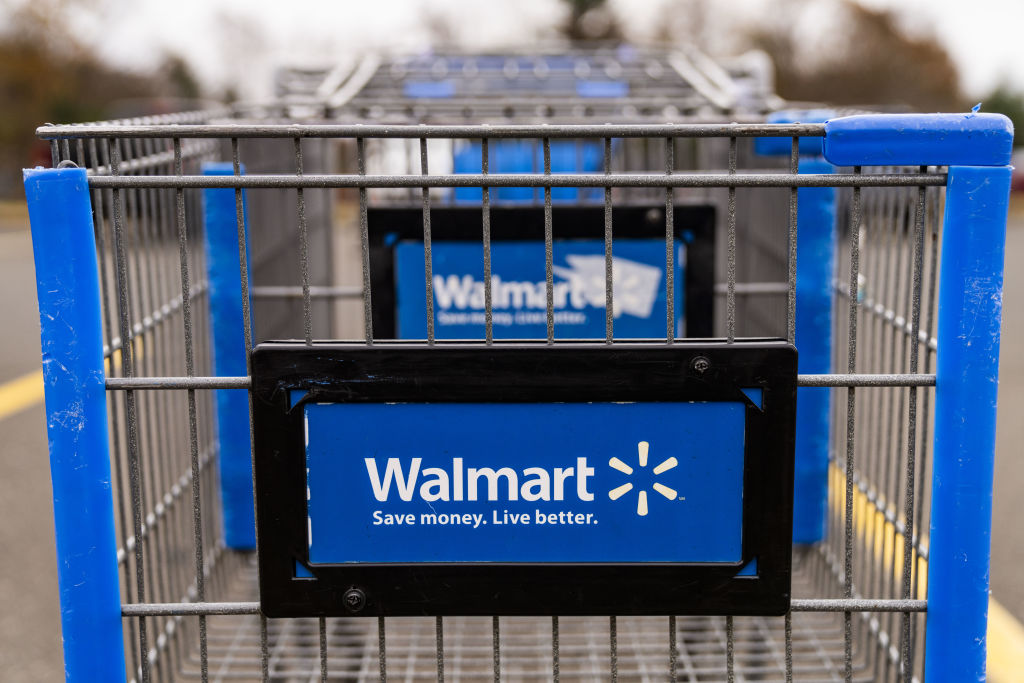A Better Way of Indexing?
Jason Hsu, one of the creators of fundamental indexing, answers our questions about the origins of this method and how it is holding up in the real world.
We have long sung the praises of simple, low-cost index funds, but in the past few years indexing has gotten a little more complicated.
So Research Affiliates, a California money-management firm, set out to design a better index. The result: fundamental indexing. The concept is gaining acceptance, as evidenced by the $20 billion that has poured into funds based on Research Affiliates' fundamental indexes.
Traditional indexes weight individual stocks according to their market value (number of outstanding shares times the stock price). Fundamental indexes instead weight stocks according to other factors, such as sales, dividends, cash flow and book value.

Sign up for Kiplinger’s Free E-Newsletters
Profit and prosper with the best of expert advice on investing, taxes, retirement, personal finance and more - straight to your e-mail.
Profit and prosper with the best of expert advice - straight to your e-mail.
Research Affiliates, which created the RAFI series of fundamental indexes (available to U.S. investors via a series of PowerShares exchange-traded funds), says tests show that its indexes outperform traditional indexes by more than 2 percentage points annually over the long term.
Whether that holds true in the real world remains to be seen. The return of the flagship PowerShares FTSE RAFI U.S. 1000 (symbol PRF), introduced in late 2006, has trailed Standard & Poor's 500-stock index by about 2 percentage points over the past year, but it's too early to draw any conclusions.
Recently, we sat down with Jason Hsu, the director of research and investment management for Research Affiliates. Hsu, along with Research Affiliates Chairman Rob Arnott, conducted the original research that gave rise to the concept of fundamental investing.
Kiplinger's: How did the idea of fundamental indexing originate?
Hsu: We were approached by a trustee from the New York State Teachers Retirement System. Basically, the group indexes everything, and that has worked well for it. But at the height of the tech bubble, the trustee was very uncomfortable with what the indexed portfolio looked like. He saw that the top names were very concentrated in the technology sector.
He approached us and asked if we could help design a better index. We didn't think it was possible to design a better index because indexing is very, very efficient, and historically very few strategies could consistently outperform an index.
It wasn't until the collapse of the dot-com bubble that we realized that there was a very valid point being made: All traditional indexes are market-capitalization weighted. That means that if a stock becomes overpriced, it would take on a larger and larger weight in the index. That's just how all indexes are designed.
The dot-com period was just a very exaggerated example of how it doesn't work when you have bubbles in market. We saw Cisco Systems (CSCO) go from 0.4% of the index with a price-earnings ratio of 30 all the way to 5% of the index and a P/E of 130 in a span of three years. It became ten times its previous weight in the index when it was probably one-tenth as attractive.
So it was quite obvious how you design a better index. If you don't let prices dictate portfolio weights, you remove this natural drag that is created by over-weighting overvalued stocks and under-weighting undervalued stocks.
How did you come up with an alternative weighting system?
We had to figure out a way to create an index that had low turnover and was highly liquid and very representative of the U.S. economy. Market cap is one way to measure the economic footprint of a corporation, but there are a lot of other ways.
We only looked at six different factors, and each factor we looked at worked. In a way, it wasn't surprising because we already knew if you move away from market-cap weighting, you are going to do better.
One of the more interesting factors we looked at was the number of employees at a company. It worked. We quickly realized that just about anything you find in a company's financials will work. So we didn't need to go on a fishing expedition to find the best factors.
What we sought were factors available for any company you can find globally because we wanted to create something that was universally applicable.
Critics say fundamental indexes aren't true index funds because, by definition, index funds must use market-cap weighting.
Market-cap weighting, by definition, is the market. That statement I agree with. It simply is a snapshot of what everybody is holding, in aggregate.
But I tend to think of indexing as anything that has low turnover and is easy and cheap to implement -- something you could base an ETF on.
By that measure, the portfolio we created is very much an index. It looks and feels like the S&P 500. If you look at the two portfolios, 95% of investors couldn't tell you which is which. The portfolios are very diversified, the names are very similar and the weights are all within a half percentage point of each other. The fundamental portfolio acts and feels like an index. It's just better constructed.
Don't fundamental indexes tend to give more weight to value stocks and smaller-company stocks?
On average, that statement is definitely true. But a lot of people think that means you must have a lot of stocks that aren't typically held in a core portfolio. That interpretation would be absolutely incorrect.
One of the interesting characteristics of a fundamental index is that value exposure moderates over time in an interesting way. The value exposure in a fundamental index gets larger if, say, you have a period during which growth stocks are outperforming.
In an expanding economy, most companies are doing well, but growth stocks appreciate in price much faster than value stocks. What happens is that the fundamental index cares only about underlying fundamentals, so it's going to have a much more balanced investment in growth and value stocks.
But the capitalization-weighted portfolio will push more and more weight to growth stocks. That creates the illusion that the fundamental portfolio is getting more and more value oriented because the cap-weighted portfolio is getting a higher P/E as more weight is put into growth stocks. You might argue that's probably the time when you want to get out of growth stocks.
Fundamental indexing requires more buying and selling of stocks, so isn't it more expensive than traditional indexing?
Rebalancing costs exist in any portfolio that any index manager has to manage. A lot of people don't realize that costs exist for the S&P 500 and Russell 1000, and those costs are not cheap.
The RAFI index turnover is usually 3 percentage points higher than the cap-weighted portfolio. It turns over about 12% annually in the U.S. large-cap space.
But if you look at how the S&P and Russell indexes turn over, it occurs in the small names at the bottom of the portfolio. During the tech boom, the S&P was taking out a lot of small manufacturing names in the bottom 100 and replacing them with small, new IPO tech stocks.
Then after the technology bust, it was replacing lot of small, tech names that had gone under or fallen in market cap with a new batch of small names. That turnover is actually very expensive, and it drives index managers a little crazy when they have to deal with these small, illiquid names being sold.
In the RAFI portfolio, most of the turnover occurs at the top ranks. So during late '90s, it was selling Cisco to buy more of Wal-Mart (WMT) and, more recently, selling out of Wal-Mart, General Electric (GE) and ExxonMobil (XOM) and starting to buy back some Microsoft (MSFT) and Intel (INTC). These transactions tend to be less costly to implement.
Get Kiplinger Today newsletter — free
Profit and prosper with the best of Kiplinger's advice on investing, taxes, retirement, personal finance and much more. Delivered daily. Enter your email in the box and click Sign Me Up.
-
 Planning for Health Care Costs in Retirement: A Comprehensive Guide
Planning for Health Care Costs in Retirement: A Comprehensive GuideMedical expenses aren't slowing down, and if you're not prepared, they can hit you like a ton of bricks.
By Bob Chitrathorn
-
 When Should You Hand Over the Keys — to Your Investments?
When Should You Hand Over the Keys — to Your Investments?The secret to retirement planning? "The best time to hand over the keys is before you’ve realized you need to hand over the keys."
By Maurie Backman
-
 Stock Market Today: Stocks Slip After Powell Talks Rate Cuts
Stock Market Today: Stocks Slip After Powell Talks Rate CutsThe main indexes closed lower Thursday after Fed Chair Powell said there's no rush to cut rates.
By Karee Venema
-
 Cisco Stock: Why Wall Street Is Bullish After Earnings
Cisco Stock: Why Wall Street Is Bullish After EarningsCisco stock is lower Thursday despite the tech giant's beat-and-raise quarter, but analysts aren't concerned. Here's what you need to know.
By Joey Solitro
-
 Cisco Leads Dow Stocks After Earnings, Job Cuts: What to Know
Cisco Leads Dow Stocks After Earnings, Job Cuts: What to KnowCisco Systems is the best Dow Jones stock Thursday after the tech giant beat earnings expectations and announced a new round of layoffs.
By Joey Solitro
-
 Stock Market Today: Stocks End Wild Week With a Win
Stock Market Today: Stocks End Wild Week With a WinPalantir Technologies and Sweetgreen were two notable gainers Friday, while Intel continued to fall.
By Karee Venema
-
 Stock Market Today: Dow Flirts With 40K After Walmart Earnings
Stock Market Today: Dow Flirts With 40K After Walmart EarningsThe 30-stock index briefly traded above the 40,000 mark as blue chip retail stock Walmart surged after earnings.
By Karee Venema
-
 Cisco Stock Struggles Despite Earnings Beat, Strong Outlook
Cisco Stock Struggles Despite Earnings Beat, Strong OutlookCisco stock is lower Thursday even after the tech giant's beat-and-raise quarter. Here's what you need to know.
By Joey Solitro
-
 Stock Market Today: Stocks Rise After January Retail Sales Data
Stock Market Today: Stocks Rise After January Retail Sales DataThe main indexes closed higher Thursday even as data showed retail sales unexpectedly fell last month.
By Karee Venema
-
 Stock Market Today: Dow Drops After Cisco, Walmart Earnings
Stock Market Today: Dow Drops After Cisco, Walmart EarningsThe S&P 500 and Nasdaq managed marginal gains Thursday.
By Karee Venema